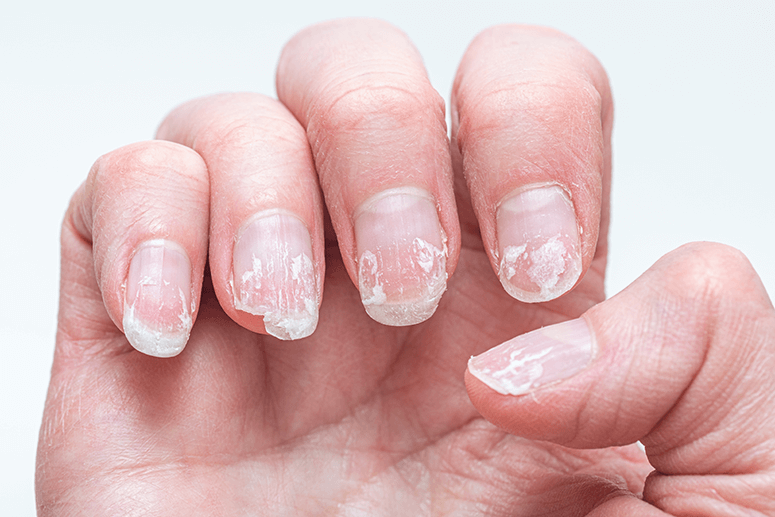How stress can impact skin, hair, nails
No one is immune to stress. If your cheeks flush with embarrassment, you understand how emotions can affect your skin. But blushing is just the beginning. Numerous skin issues have a strong connection to one’s mental state.
For instance, a patient of mine experienced hair loss four months after a stressful event like childbirth or after recovering from COVID-19. Another patient, deeply affected by her parents’ divorce, developed trichotillomania, compulsively pulling out her hair. I’ve seen a young patient whose strict mother correlates to severe asthma due to academic pressure. And then there’s this teenager patient, whose father’s authoritarian stance on her love life triggers frequent psoriasis flare-ups, preventing her from even dating her crush.
Another patient of mine suffers from recurring hives. Despite normal laboratory results, she continues to endure red, intensely itchy rashes that seem to worsen with stressors from her job as a caregiver for prominent families in our country.
In this fast-paced world, stress has become an omnipresent companion for many. From the pressure of work to personal challenges, stress can weave its way into every aspect of our lives, affecting not only our mental well-being, but also our physical health.

One area where stress exerts a significant toll often goes unnoticed: our skin, hair, nails. These seemingly peripheral aspects of our bodies can bear the brunt of stress in surprising and sometimes alarming ways.
The brain and the skin are bound for life. When one senses embarrassment, the skin blushes. When one senses pain, the skin processes it. And when one bears the burden of the toxicity of married life, the heartaches of a relationship, the relentless bullying of people, or even the ill effects of the pandemic, the skin can manifest with a pimple, hair fall, or an eczema flare.
A quick surge of stress can be a good thing. It is the chronic, continuing stress, the kind that every emotional being is likely experiencing right now, that takes a toll on the skin. Much of the skin-psyche connection comes down to the overproduction of the primary stress hormones cortisol and adrenaline (leading to sleep disorder, anxiety, and lowered immunity).
Skin: A mirror of our inner world
Our skin barrier needs three things to survive: oil, water and the microbiome—and cortisol depletes them all. The reason why our skin gets dry, rough and easily irritated is because those healthy oils act as a protective layer. Without these adequate lipids to seal in hydration, the skin leaks water in a process known as transepidermal water loss.
Also, cortisol stimulates the overproduction of sebum and that explains why our skin becomes oilier and acne-prone during times of stress. This results in the skin’s pH alteration that creates an inhospitable environment for the one trillion symbiotic microorganisms that exist on and in the skin barrier—the microbiome (symbiotic microorganisms).

If you are not producing enough of these healthy fats and maintaining a healthy skin barrier, then you prevent these microbiomes from thriving. These tiny organisms feed on sebum, thus sustaining healthy oil levels on the skin. They also feed off of dead skin cells acting as exfoliators! They also produce peptides and ceramides, two essential beauty ingredients that keep skin firm and moisturized. Lastly, these microbes offer protection from pollution, sunlight, and invading pathogens.
Chronic stress means chronic exposure to cortisol, too! You produce a lot of internal free radicals. These are like missiles that target cells for destruction. When free radicals target DNA, you get skin cancer. When free radicals target elastin and collagen, it leads to fine lines and wrinkles. When it targets lipids, it leads to dehydration, skin barrier damage and acne. Prolonged cortisol exposure also inhibits the production of hyaluronic acid and collagen. These two are what make the skin plump and youthful.
When you can’t make enough, the skin gets thinner and you may easily develop bruises. The skin also impairs its ability to repair itself, resulting in slower wound healing and increased susceptibility to infections. When you’re stressed, your body also sends a message to its immune cells, telling them to release powerful chemicals notably, histamine. Histamine triggers inflammation and is responsible for the itchiness associated with hives or urticaria.
Hair: A strand of stress
The state of our hair can often serve as a visual indicator of our overall health and well-being. While it’s normal to lose a certain amount of hair strands each day, excessive or sudden hair loss can be a distressing consequence of chronic stress.

Stress-induced hair loss, known as telogen effluvium, occurs when a significant number of hair follicles enter the resting phase prematurely due to stress. This results in increased shedding and a noticeable thinning of the hair. Although the hair typically regrows once the stressors are alleviated, prolonged or severe stress can lead to more persistent hair loss.
In addition to telogen effluvium, stress can also contribute to other hair-related issues such as dandruff, scalp itchiness, and even premature graying. The mechanisms underlying these effects are complex and multifaceted, involving disruptions to the hair growth cycle, alterations in scalp health, and oxidative stress (a bodily condition that happens when your antioxidant levels are low).
Nails: The silent messengers
While nails may seem like insignificant appendages, they can provide valuable insights into our health status, including our stress levels. Chronic stress can impact nail health in various ways, often manifesting as changes in texture, strength, and growth patterns.
One common consequence of stress on the nails is brittleness. When the body is under prolonged stress, it diverts resources away from non-essential functions like nail growth, resulting in weaker, more fragile nails prone to splitting and breaking.

Stress can also lead to the development of nail ridges, which are vertical or horizontal lines that form on the nail surface. These ridges typically indicate disruptions to the nail matrix, the area where nail cells are produced, and can be a sign of nutritional deficiencies or physiological stress.
Furthermore, stress-related habits like nail-biting or picking can exacerbate nail problems, leading to inflammation, infections and even permanent damage to the nail bed.
Here are some coping strategies:
Mindfulness and relaxation techniques. Meditation, deep-breathing exercises, and progressive muscle relaxation techniques can help.
Healthy lifestyle changes. Try regular physical activity, a balanced diet, staying hydrated, adequate sleep.
Self-care rituals. Adopt soothing skincare routines. Avoid ingredients like glycolic acid, salicylic acid, benzoyl peroxide, and retinol. These are very drying and can deplete the normal, healthy barrier function. Instead, use creams with glycolipids, fatty acids, and ceramides. Include scalp massages and relaxing nail-care rituals.
Seek support from good friends, non-toxic family members, or a mental health professional to help you navigate challenging situations.
Set boundaries. Learn to say “no.”


